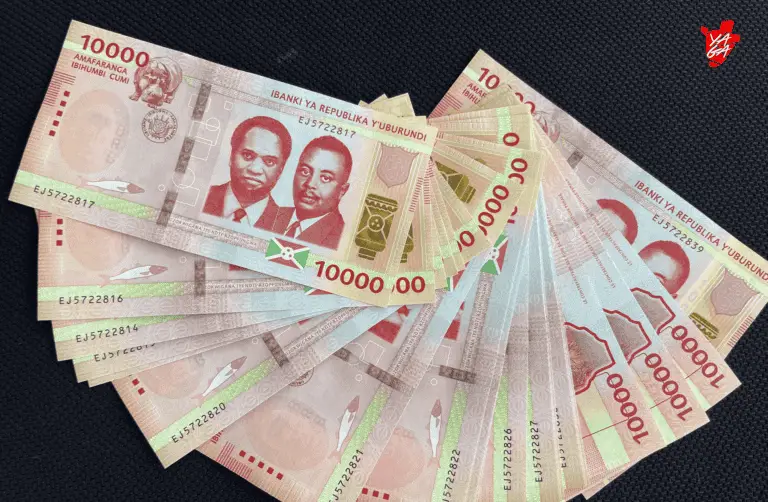The Burundi franc (FBu) is the official currency of Burundi. Introduced in 1964, two years after the country's independence, it replaced the Ruanda-Urundi franc, which was used during the colonial period. Since its introduction, the Burundi franc has undergone many changes, reflecting the country's economic and political upheavals.
Origins and introduction
Following Burundi's independence in 1962, the country still shared its currency with Rwanda in the form of the Ruanda-Urundi franc. It was not until 1964 that Burundi introduced its own currency, the Burundi franc, marking an important step in the consolidation of its economic independence. The first issues of Burundian banknotes included important figures in the country's history, such as King Mwambutsa Bangiricenge and, later, independence heroes like Prince Louis Rwagasore.
Characteristics and evolution of the Notes
Over the years, the design of Burundian banknotes has evolved to reflect the country's political changes. For example, today's banknotes feature portraits of iconic figures such as Melchior Ndadaye, Burundi's first democratically elected president. The Burundian 10 and 20 franc bills, although once legal tender, are no longer in circulation today, while the 50 franc bill is still in circulation.
In terms of security and durability, Burundian banknotes are equipped with modern features such as plastic layers to protect them from moisture. However, inadequate preservation of banknotes, particularly by market traders, accelerates wear and tear, requiring frequent replacement by the Banque de la République du Burundi.
Economic impact and challenges
Inflation and Devaluation
The Burundian franc has suffered significant devaluations in recent decades. For example, between 2017 and 2020, the exchange rate fell from 1 USD for around 1,737 FBu to 1 USD for almost 2,000 FBu. This devaluation is partly due to persistent inflation and structural economic challenges, such as over-reliance on imports and trade deficits.
Management Problems and Trust
Managing the currency remains a major challenge. The continued depreciation of the Burundi franc has led to a loss of confidence among citizens, exacerbated by economic difficulties such as inflation and the scarcity of foreign currency. These problems limit the country's ability to stabilize its currency, despite the efforts of the Central Bank of Burundi.
Conclusion
The Burundi franc is much more than a simple means of exchange; it is a symbol of Burundi's history and sovereignty. However, its management remains a major challenge for the country, which has to contend with persistent inflation, constant devaluation and a loss of confidence on the part of its citizens. The Central Bank of Burundi will have to continue adapting its policies to meet these challenges and stabilize the currency, while preserving its crucial role in the Burundian economy.


No Title
10
No Title
excellent work
used this for a school project